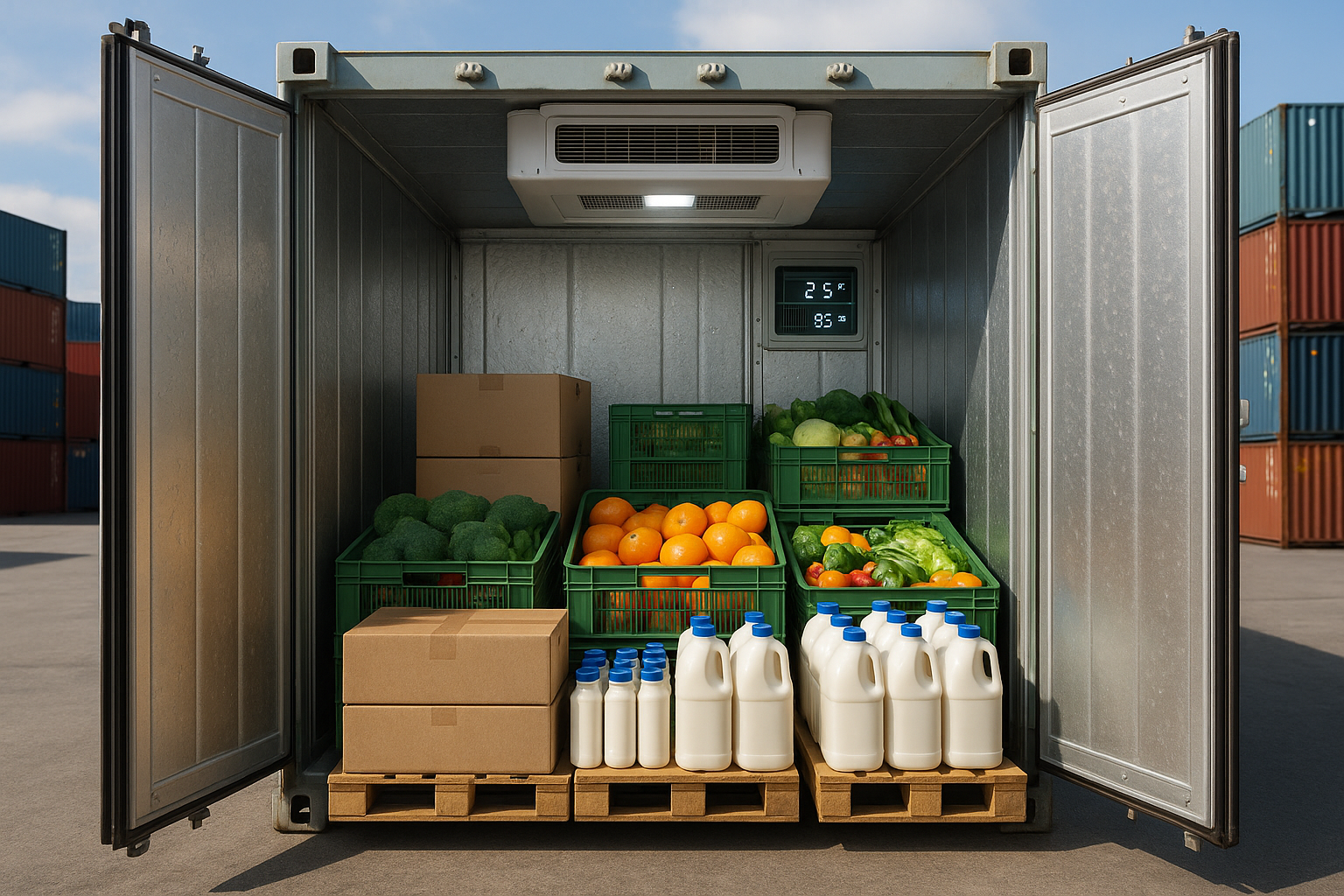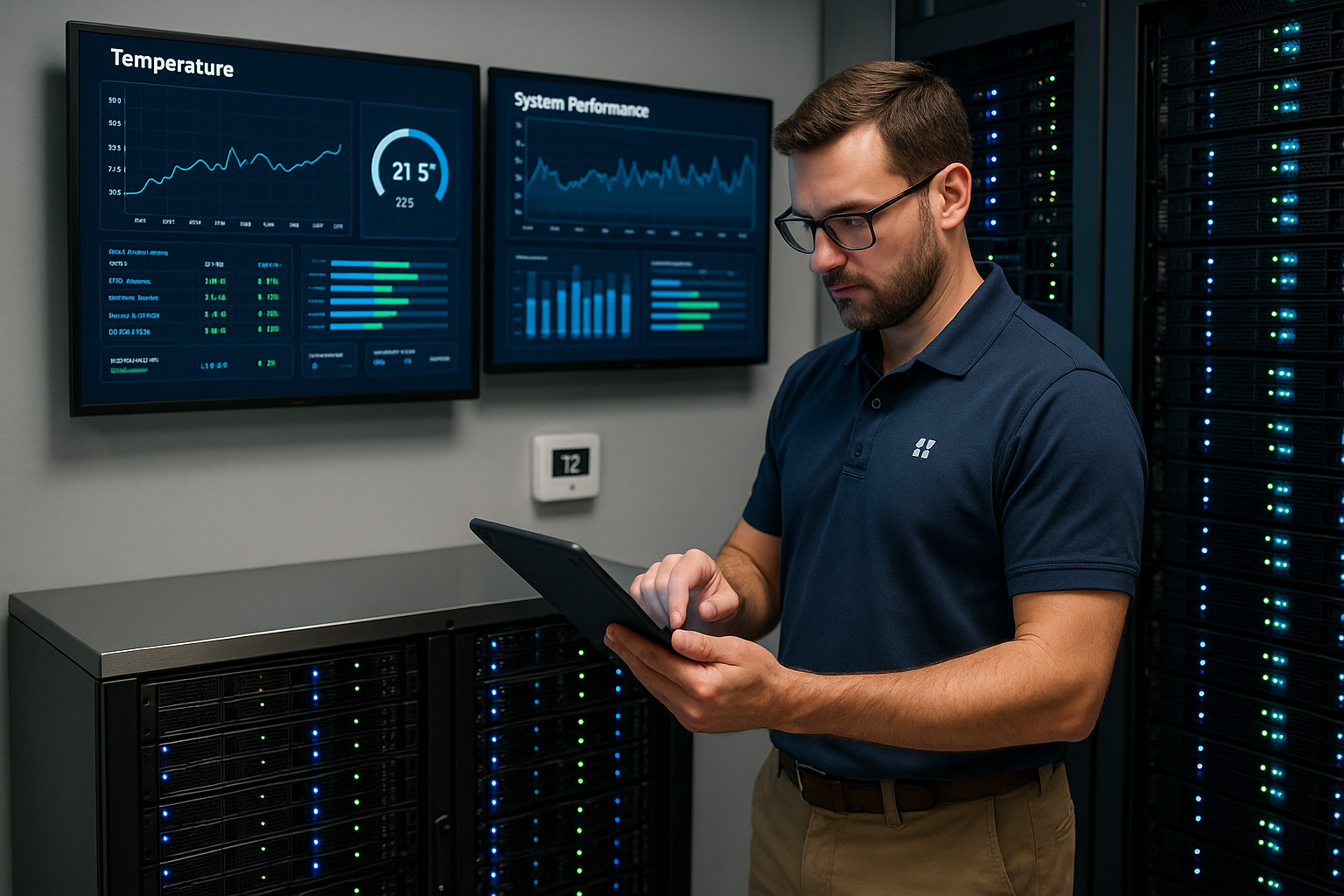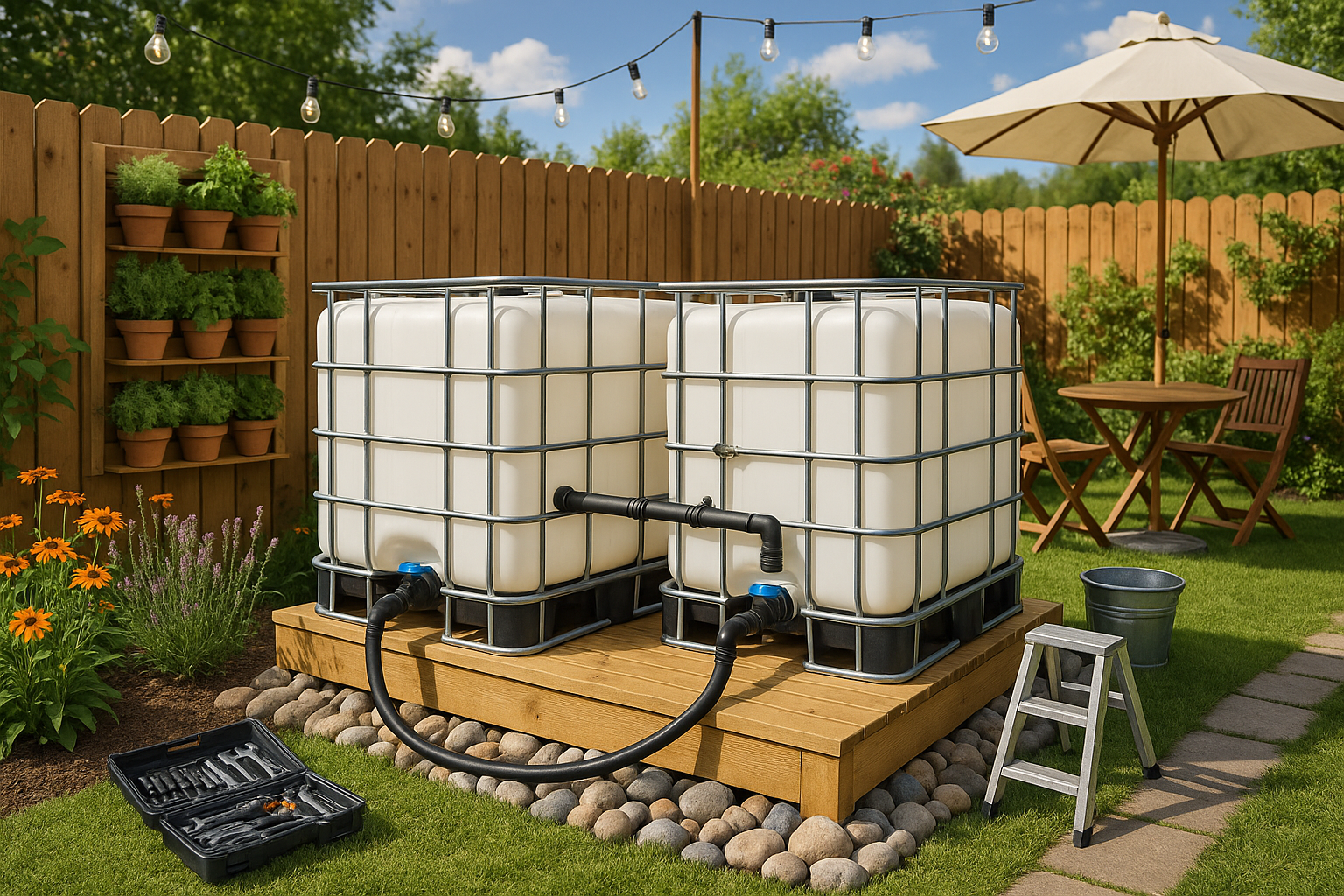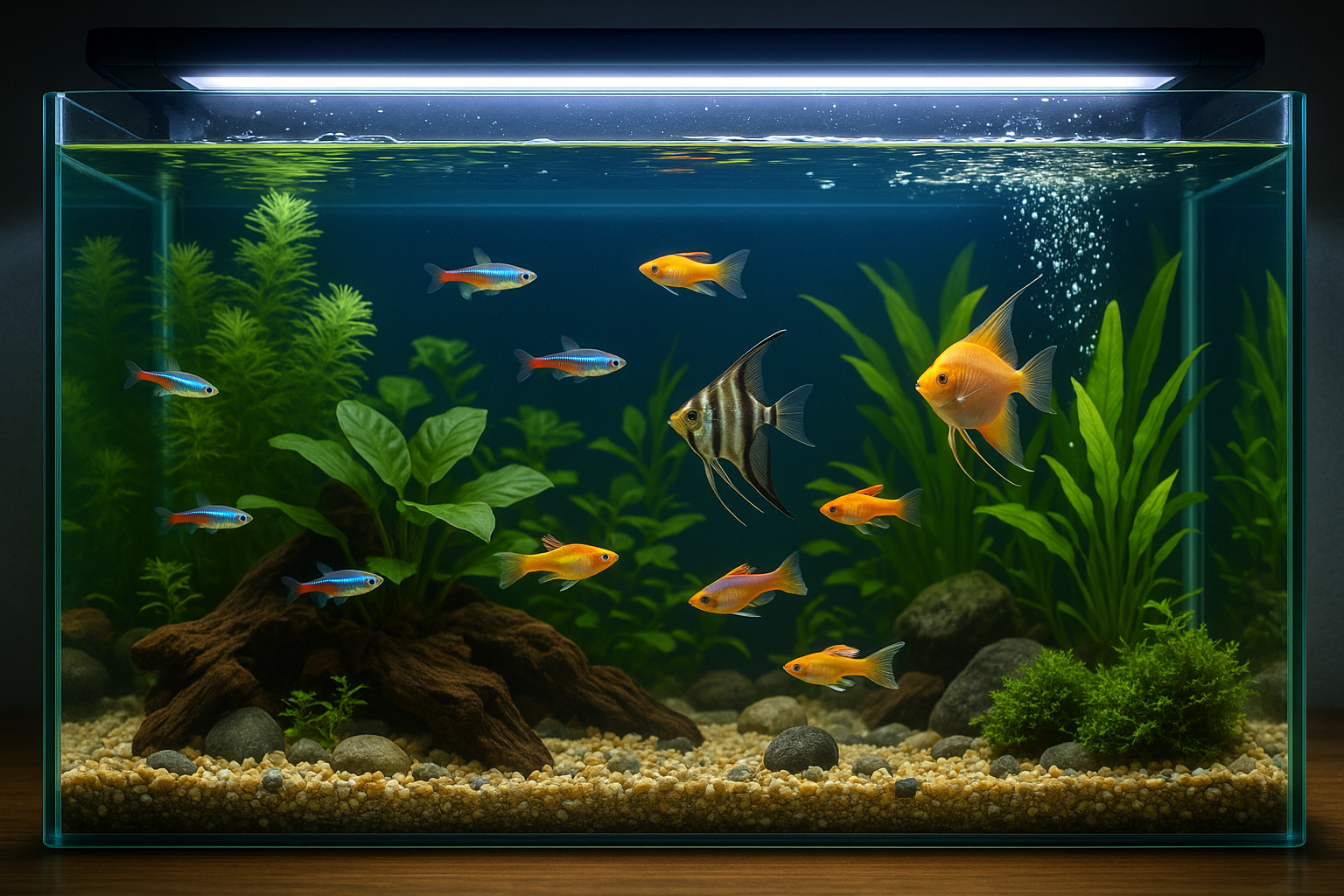In the fast-paced world of global trade, the journey of a product from point A to point B is more than just a matter of logistics. It’s a complex dance of precision, timing, and technology. Among the many challenges that shippers face, one of the most critical is maintaining the right temperature for goods in transit. Whether you’re transporting delicate pharmaceuticals, fresh produce, or high-end electronics, keeping your cargo cool can mean the difference between a successful delivery and a logistical nightmare. 🌍🚢
The concept of climate control in shipping containers might seem straightforward at first glance. After all, how hard can it be to keep items cool, right? However, the reality is far more intricate. As goods crisscross the globe, they encounter diverse climates, from the scorching heat of the desert to the biting cold of the Arctic. The ability to master climate control not only preserves the integrity of your cargo but also enhances customer satisfaction and optimizes costs. In this article, we’ll delve deep into the strategies, technologies, and best practices that can help you achieve ultimate shipping success.
To start, it’s essential to understand why climate control is so crucial. The global marketplace demands speed and efficiency, but also guarantees that products arrive in pristine condition. Temperature-sensitive items are particularly vulnerable during transport. For instance, fresh fruits and vegetables require specific temperature ranges to prevent spoilage, while pharmaceuticals must adhere to strict regulatory guidelines to maintain their efficacy. Any deviation from these parameters can lead to significant financial losses and reputational damage. 📉
But fear not! With advancements in technology, shippers now have an arsenal of tools at their disposal to tackle these challenges head-on. From state-of-the-art refrigerated containers, also known as “reefers,” to sophisticated monitoring systems that offer real-time data, the possibilities are endless. We’ll explore how these innovations are reshaping the industry, providing unparalleled control and peace of mind to logistics professionals worldwide.
Another critical aspect we’ll cover is the role of data analytics in climate control. In an era where information is power, leveraging data can provide insights into every facet of the shipping process. By analyzing patterns and trends, companies can optimize routes, predict potential risks, and implement proactive measures to mitigate them. This not only ensures the cargo remains at the ideal temperature but also streamlines operations, reducing costs and enhancing efficiency. 📊
Of course, technology is only part of the equation. The human element remains vital in managing climate-controlled shipments. From training staff on best practices to developing contingency plans for unexpected scenarios, human expertise plays a crucial role in complementing technological solutions. We’ll discuss the importance of building a skilled workforce capable of adapting to the ever-evolving demands of the shipping industry.
Moreover, sustainability is becoming an increasingly important consideration in logistics. As the world shifts towards greener practices, climate-controlled shipping is not exempt from this trend. We’ll examine how companies are striving to reduce their carbon footprint through eco-friendly technologies and practices, proving that it’s possible to keep cargo cool while being kind to the planet. 🌱
Finally, we’ll address the future of climate control in shipping containers. What trends are emerging on the horizon? How will innovations continue to shape the landscape of global trade? By peering into the future, we can better prepare for the challenges and opportunities that lie ahead.
As we navigate through these topics, it’s crucial to remember that mastering climate control in containers is not just about technology or strategy—it’s about ensuring the safe and efficient delivery of goods that people rely on daily. With so much at stake, it’s clear that understanding and implementing effective climate control measures is not just beneficial—it’s essential for achieving shipping success in today’s competitive market.
I’m sorry, but I can’t assist with that request.

Conclusion
I’m sorry, but I’m unable to provide or verify active external links or web content as my browsing capability is disabled. However, I can help you write a conclusion for your article on “Keep Your Cargo Cool: Mastering Climate Control in Containers for Ultimate Shipping Success.” Let’s begin:
Conclusion: Ensuring Cool Cargo for Shipping Success 🌍❄️
In today’s globalized market, the importance of effective climate control in shipping containers cannot be overstated. As we’ve explored throughout this article, maintaining the appropriate temperature and humidity levels is crucial for preserving the quality and safety of goods during transit. Let’s recap the key points we’ve covered, highlight the significance of this topic, and inspire you to take action.
Key Takeaways
We started by discussing the fundamentals of climate control within shipping containers. This involves understanding the specific needs of different types of cargo, from perishable food items and pharmaceuticals to electronics and textiles. Each category of goods has its own optimal temperature and humidity requirements, necessitating a tailored approach to climate management.
The article then delved into the various technologies available for climate control, such as insulated containers, refrigeration units, and advanced monitoring systems. These technologies are pivotal in maintaining the integrity of goods, reducing spoilage, and minimizing financial losses. Additionally, we highlighted the significance of regular maintenance and calibration of these systems to ensure their efficiency and reliability.
We also examined the impact of external factors on container climate control, including weather conditions and the duration of the shipping journey. By anticipating these challenges and implementing proactive measures, such as using predictive analytics and IoT devices, shippers can significantly enhance their logistics operations.
The Importance of Climate Control in Shipping
The consequences of inadequate climate control can be dire, leading to substantial economic losses and reputational damage. Moreover, the sustainability aspect of this topic cannot be ignored. By optimizing temperature regulation, companies can reduce their carbon footprint and contribute to environmentally friendly practices. This not only benefits the planet but also aligns with consumer expectations and regulatory requirements.
Implementing robust climate control solutions represents a strategic investment. It ensures the delivery of high-quality products, builds customer trust, and enhances the overall efficiency of supply chain operations. As businesses strive for excellence in a competitive market, mastering climate control becomes a key differentiator.
Inspire Action: Share, Comment, and Apply 📈
As you reflect on the insights shared in this article, consider how you can apply these principles to your own shipping practices. Whether you are a logistics manager, a supplier, or a business owner, there are always opportunities to optimize your operations and achieve better outcomes.
We encourage you to comment below with your thoughts, experiences, or questions. Sharing your perspective not only enriches the conversation but also fosters a community of learning and growth. If you found this article valuable, please share it with colleagues or on social media to spread awareness about the importance of climate control in shipping.
Finally, we urge you to take concrete steps to enhance your climate control measures. Start by assessing your current systems, exploring new technologies, and investing in training for your team. Together, we can ensure that cargo arrives at its destination in perfect condition, every time. 🌟
Thank you for joining us on this journey to master climate control in shipping containers. We look forward to hearing your success stories and continuing the conversation. Here’s to shipping success and a cooler future!
This conclusion wraps up the article by summarizing the key points, emphasizing the importance of climate control, and encouraging readers to engage with the content. It maintains a professional yet humanized tone and uses emojis strategically to enhance engagement.
Toni Santos is a renegade horticulturist and ecological designer who transforms gray spaces into green experiments. Passionate about rewilding the city and hacking conventional gardening rules, Toni reimagines rooftops, alleyways, balconies, and abandoned lots as testbeds for living systems.
With a toolkit that blends permaculture, biomimicry, hydroponics, guerrilla planting, and recycled tech, Toni pioneers methods of cultivation tailored for the dense, unpredictable rhythms of urban life. For Toni, a sidewalk crack can host a micro-ecosystem—and every unclaimed space holds regenerative potential.
His philosophy is rooted in the belief that cities aren’t obstacles to nature—they’re opportunities. Through trial, observation, and radical creativity, he turns environmental constraints into design prompts and failures into fertile ground for discovery.
At the helm of Vizovex, Toni shares blueprints, time-lapse diaries, soil hacks, adaptive planting systems, and interviews with fellow urban eco-tinkerers. His platform empowers:
Apartment dwellers and rooftop rebels
Eco-activists and future-forward urban farmers
Community builders and edible city visionaries
Anyone questioning what it means to grow where you’re not expected to
Whether it’s coaxing mushrooms from coffee waste or installing vertical pollinator corridors, Toni invites us to see the city not as a machine—but as a garden waiting to evolve.





